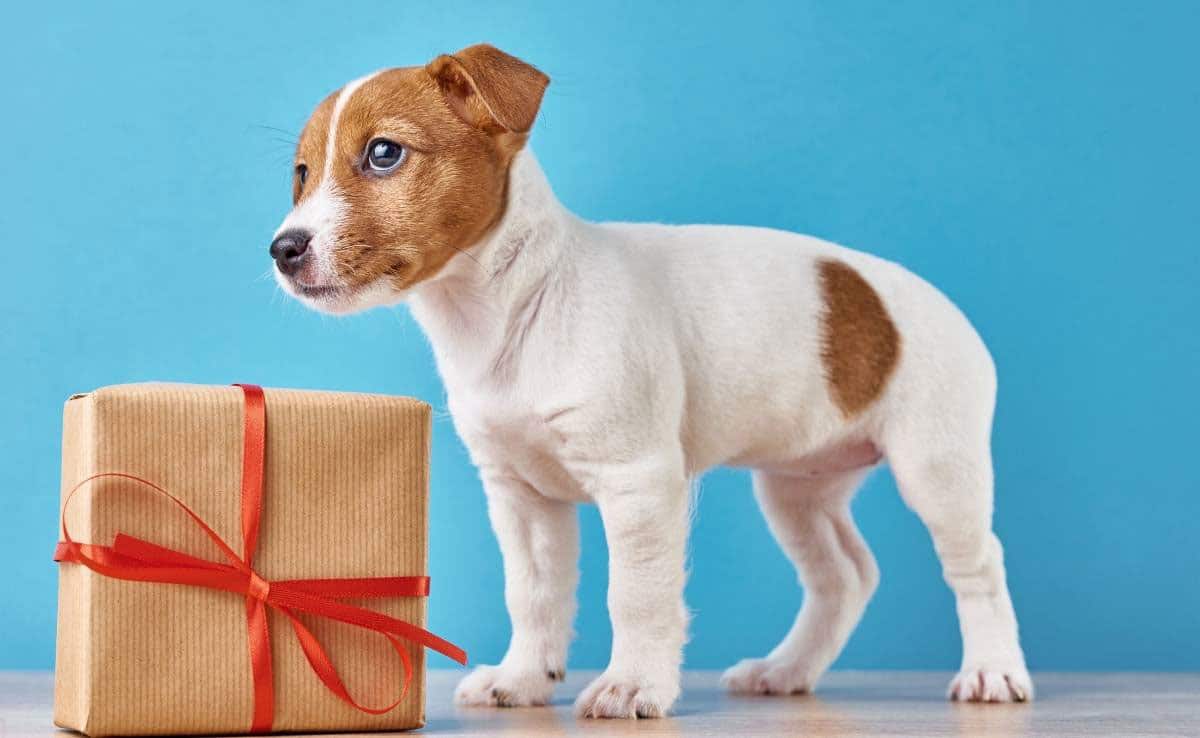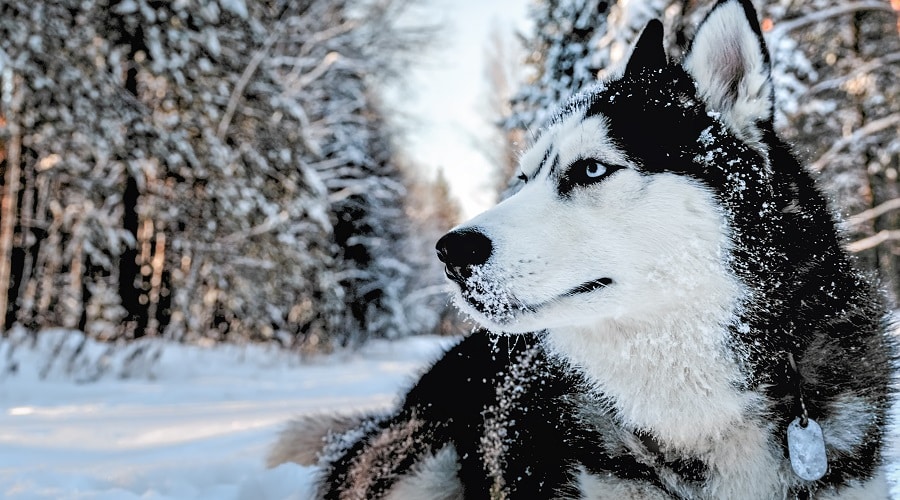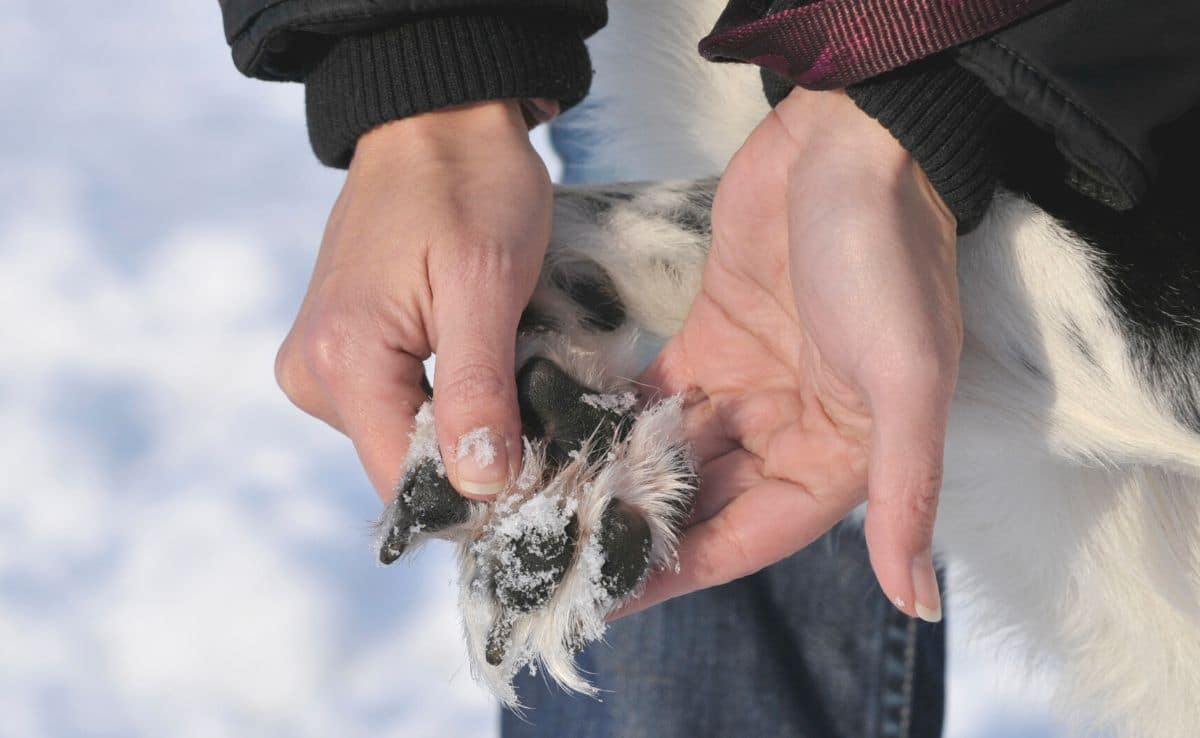Murder Ferns & Death Daffodils: The Plants That Want Your Dog Dead
When you purchase through links on our site, we may earn a commission. Here’s how it works.
You think your home is a safe haven—until your dog starts vomiting, trembling, or refusing food, and you realize the culprit isn’t something you dropped on the floor … it’s the decorative plant sitting quietly in the corner. Pet poisonings can feel sudden and terrifying, especially when they come from something as seemingly harmless as greenery.
Table of Contents
Poisonous plants for dogs are more common than most pet parents realize. That lush ivy trailing across your bookshelf? Or the blooming daffodils lining your garden path? They may pose serious health risks—or worse. This guide will help you spot the hidden dangers, understand the symptoms, and create a pet-safe environment without sacrificing your love for plants.
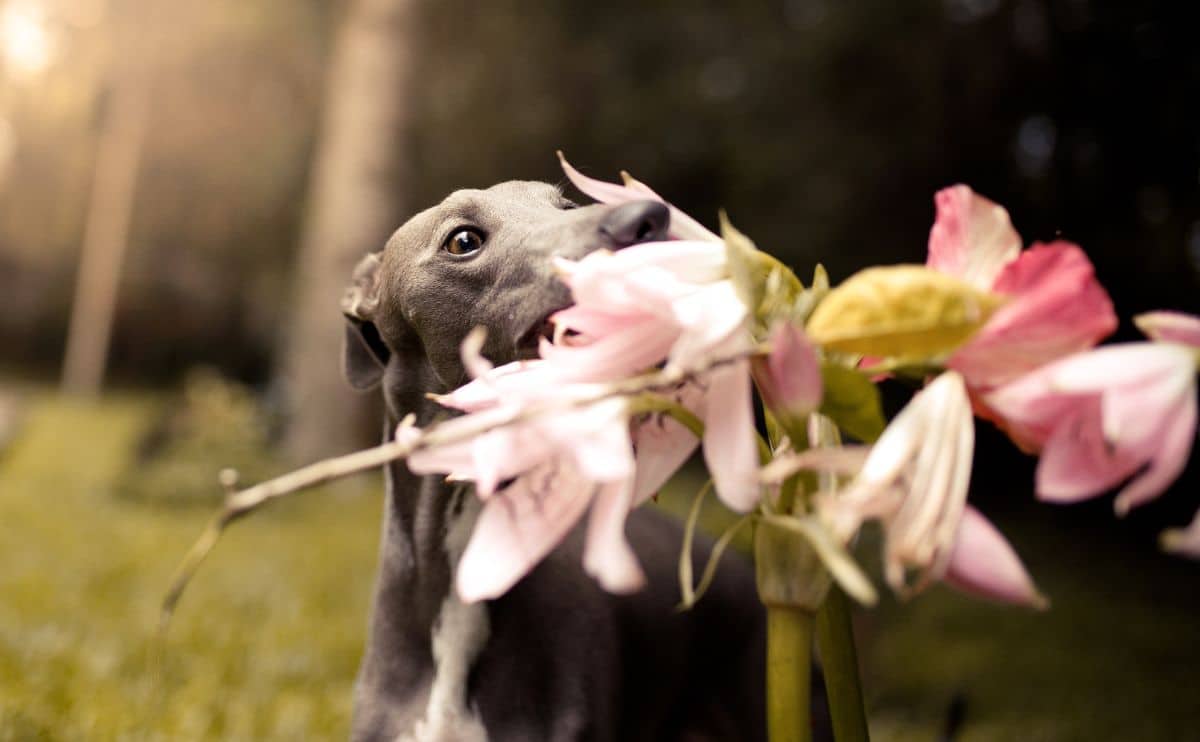
Startling Pet Poisoning Statistics You Need To Know
Each year, the ASPCA’s Animal Poison Control Center (APCC)—widely regarded as an industry standard for tracking and responding to toxic pet exposures—receives hundreds of thousands of calls related to animal exposure to harmful substances. In 2024 alone, the APCC logged over 451,000 cases, with toxic plants and fungi accounting for 8.1% of all calls. That made plant poisoning the year’s sixth most commonly reported pet toxin.
More than 700 plants have been identified as producing physiologically active or toxic substances that can cause harmful effects in animals. The ASPCA’s toxic plant database includes over 400 species specifically poisonous to dogs—many common in home gardens, floral arrangements, or indoor decor.
Research shows that most plant poisonings involving pets are accidental and occur when dogs chew on or ingest ornamental plants or greenery brought indoors. While some plants may cause only mild stomach upset, others can trigger seizures, organ failure, or even death.
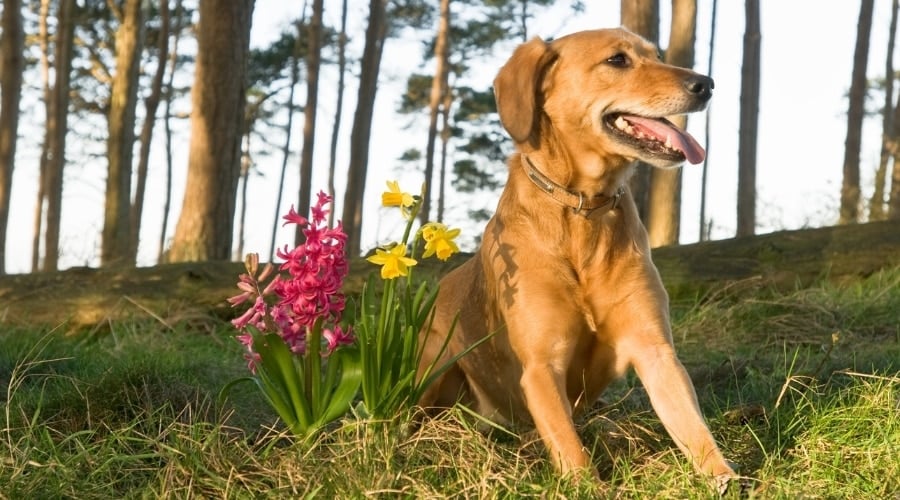
Plant Poisoning Patterns Shift With The Seasons
A 2023 study of APCC data identified spikes in public calls during the winter holiday season, specifically when the toxin was a plant. Researchers suggest this trend may be due to the increased presence of seasonal plants like poinsettias or the practice of bringing outdoor plants inside to protect them from freezing temperatures.
A related study noted that poisoning-related calls coming from veterinarians (rather than pet owners) were significantly higher in colder months—particularly for incidents involving plants or pesticides. Researchers suggested that pets may be exposed to more dangerous substances, such as rodenticides or insecticides, which are often placed indoors during winter when pests come inside. These chemicals can cause severe reactions, leading pet owners to rush their dog to the vet rather than calling the APCC first.
In spring, a new wave of hazards emerges. The APCC has previously reported a surge in calls from dog owners whose pets have dug up or chewed on spring bulbs like tulips or daffodils—a behavior often triggered by curiosity or freshly tilled soil.
The Pet Poison Helpline adds a seasonal warning of its own: fertilizers such as blood meal and rose fertilizers—commonly used in garden beds—can be highly toxic if ingested.
Hidden Dangers: Common Plants That Could Harm Your Dog
Not all greenery is good for your pup. Whether it’s in your backyard, your neighbor’s hedge, or a gift bouquet on your kitchen table, many plants that look harmless can actually cause serious health problems for dogs.
To help you identify threats more easily, we’ve broken down the most commonly reported offenders by location and use.

Outdoor Garden Plants & Yard Hazards
These are commonly found in flower beds, vegetable patches, and decorative garden borders. Many are planted for their vibrant color or culinary use—but even a single bite can put your dog at risk.
Toxic Flowers & Ornamental Plants (Most To Least Dangerous)
- Sago palm – Among the most lethal plants for pets. Ingestion can rapidly lead to vomiting, liver failure, and death.
- Foxglove – Loaded with cardiac glycosides; ingestion can cause fatal heart rhythm abnormalities.
- Azalea & rhododendron – Highly toxic; causes vomiting, weakness, and cardiac failure.
- Cyclamen – Especially the tubers; can trigger heart rhythm disturbances, seizures, and death.
- Spring bulbs (tulip, daffodil, hyacinth) – All contain compounds that irritate the GI tract and, in higher amounts, may lead to tremors, seizures, or heart problems.
- Lily of the Valley – Toxic to dogs and can cause cardiac effects.
- Kalanchoe – May cause vomiting and diarrhea; large ingestions can affect heart rhythm.
- Hydrangea – Contains cyanogenic glycosides that may cause lethargy, vomiting, and diarrhea.
- Morning glory seeds – In large quantities, may cause vomiting and hallucinations.
- Peony – Causes mild to moderate gastrointestinal upset.
- Hosta – Typically result in vomiting, diarrhea, and mild depression.
Toxic Edible Garden Plants (Most To Least Dangerous)
- Grape vine – While the exact toxin remains unknown, grapes are extremely dangerous to dogs and can cause acute kidney failure.
- Onions, garlic, and chives – Repeated or large exposures can destroy red blood cells and lead to life-threatening anemia.
- Rhubarb leaves – High in oxalates; can cause drooling, tremors, and potential kidney failure in large quantities.
- Tomato plants (green fruit and stems) – Contain solanine; usually causes mild to moderate digestive and neurological symptoms.
Mulch & Ground Cover Hazards
- Cocoa mulch – Made from cocoa bean shells; contains theobromine, the same compound that makes chocolate dangerous. Highly toxic if ingested.
- Pine needle mulch – Can cause mouth irritation and digestive upset.
- Decorative pebbles or stone mulch – Not toxic, but may be swallowed and cause choking or blockages, especially in puppies.
A Real-Life Scare: When A Grape Toss Turned Into An Emergency
I was babysitting my son David’s dog, Jack, a Jack Russel Terrier mix. I loved that little guy, and he was so much fun.
This happened some years ago. It was a Saturday afternoon, and I was talking to my sister on the phone, munching on grapes. Jack was staring at me, so I threw him one, and he leaped in the air to catch it.
As I continued to talk and eat, I occasionally tossed Jack a grape, delighting in his “circus dog” antics. I happened to mention to my sister how funny he was jumping to catch the grapes, and she quickly told me grapes were deadly for dogs.
I panicked, hung up the phone, and looked for the number of the Animal Poison Control. I called and found that to receive any help, I would first need to “donate” a certain amount of money.
I scrambled to get my credit card, gave the money, and finally got someone on the line. They told me that they were unsure if it was the skin, pulp, or seeds of the grapes that caused the problem; it didn’t seem to matter if the grapes were white, red, or purple, and they were unsure why it did not affect some dogs and killed others.
They instructed me to force Jack to vomit by giving him a saucer of milk with peroxide in it. I was told if all the grapes did not come up, I needed to take him to a vet. I asked if I could wait to see if he seemed sick, and they said it would be too late to save him by then.
Jack immediately began vomiting all over the house, and I followed behind him, trying to count chewed-up grapes, only to realize that I wasn’t even sure of the number of grapes I had actually given him. So off we went to the nearest emergency vet that was open.
I was frantic! I knew that if anything happened to Jack, my son would never forgive me.
The vet advised me there was no way to know if Jack would react to the grapes, so he would need intravenous fluids to flush his kidneys through the night and the next day. That mistake cost me $800, poor Jack and poor me, but at least Jack was fine and returned to his old self.
– Story shared by Kathy Solarino
Quick Tip: Spring Bulbs + Curious Dogs = Trouble
Many spring bulbs—like tulips, daffodils, and hyacinths—are planted near paths, patios, and borders. Dogs are more likely to dig in freshly mulched or disturbed soil, putting them at direct risk of unearthing and chewing toxic bulbs.
Preventive measures:
- Use fencing or decorative borders to block off newly planted beds
- Avoid bone or blood meal fertilizers, which attract digging
- Supervise outdoor time during high-risk planting seasons
View our complete guide on how to create a safe backyard habitat for pets and wildlife.
Poisonous Plants In Popular Landscaping
These plants are frequently used in professional and residential landscaping for their hardiness, color, and curb appeal. But many are highly toxic to dogs—and often underestimated because they’re so common.
High-Risk Landscape Plants (Most To Least Dangerous)
- Oleander – Extremely toxic; even one leaf can be fatal. Affects the heart, gastrointestinal system, and central nervous system.
- Japanese yew – All parts except the berry flesh are cardiotoxic. Can cause sudden death from heart failure.
- Castor bean plant – Seeds contain ricin, one of the most potent plant toxins. Ingestion is often fatal.
- Azalea & rhododendron – Also common in ornamental landscaping; ingestion may cause vomiting, weakness, and coma.
- Japanese pieris (lily-of-the-valley bush) – Can cause vomiting, diarrhea, low blood pressure, come, and death.
- Lantana – Ingestion can lead to vomiting, diarrhea, labored breathing, weakness, and liver failure.
- Privet – Often used in hedges; ingestion can lead to GI upset, incoordination, and increased heart rate.
- Wisteria – Seeds and pods are toxic; ingestion causes vomiting, diarrhea, and depression.
- Holly (American, English) – Berries may cause vomiting, diarrhea, and lethargy.
- Ivy (English, Algerian) – Causes oral irritation, drooling, and gastrointestinal distress.
- Boxwood – A hedge staple; ingestion may lead to vomiting and diarrhea.
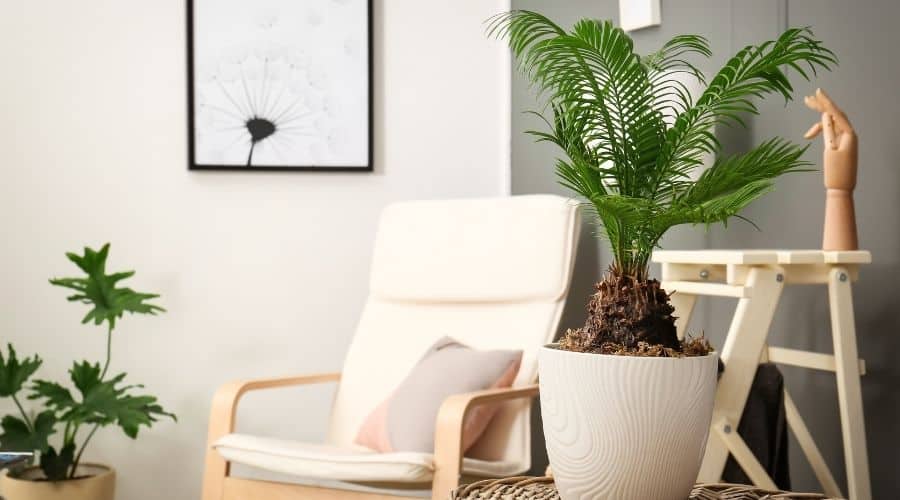
Indoor Houseplants & Bouquet Additions
From stylish houseplants to seasonal floral arrangements, many indoor greens can pose hidden risks to dogs. Some are mild irritants, while others may lead to severe poisoning—especially if chewed or ingested in large amounts.
Toxic Indoor Plants (Most To Least Dangerous)
- Cyclamen – Especially toxic when dogs chew the tubers. Can cause severe vomiting, drooling, seizures, and even heart abnormalities.
- Amaryllis – Found in holiday bouquets and indoor planters. Ingestion can lead to tremors, abdominal pain, and excessive salivation.
- Dieffenbachia (dumb cane) – Causes intense oral irritation, swelling, drooling, and difficulty breathing.
- Philodendron – Mild to moderately toxic; can lead to mouth pain, swelling, and GI upset.
- Pothos (Devil’s ivy) – Causes burning of the lips and mouth, drooling, and vomiting.
- Peace lily – Another common offender; causes oral irritation, vomiting, and drooling.
- Jade plant – Can cause vomiting, depression, and loss of coordination.
- Snake plant – Causes nausea, vomiting, and diarrhea.
- Rubber tree (Ficus elastica) – May lead to skin irritation or GI upset if ingested.
- Begonia – Contains oxalates that irritate the mouth and may cause vomiting.
Safe Plant Swaps: Switch Toxic Plats With Non-Toxic Lookalikes
Want the aesthetic without the risk? Here’s a list of popular toxic plants paired with dog-safe alternatives that offer similar color, shape, or structure—without the emergency vet visits.
| Toxic Plant | Safe Lookalike | Why It’s A Good Swap |
|---|---|---|
| Sago palm | Areca palm | Airy, tropical aesthetic; non-toxic and pet-safe |
| Peace lily | Spider plant | Arching leaves, easy to grow, non-toxic |
| Pothos (Devil’s ivy) | Swedish ivy | Similar trailing habit and color, but safe |
| Philodendron | Prayer plant | Bold patterns and colors, completely non-toxic |
| Dieffenbachia | Calathea | Striking leaves, similar shape, pet-safe |
| Snake plant | Parlor palm | Upright growth, easy care, no toxicity |
| Rubber tree | Peperomia | Glossy-leaved option with a similar lush look but no toxicity |
| Kalanchoe | Burro’s tail (Sedum morganianum) | Succulent appearance, non-toxic |
| Cyclamen | African violet | Compact flowering plant with a similar soft shape |
| Tulip, daffodil, hyacinth | Snapdragons or zinnias | Colorful spring flowers, totally safe for dogs |
| Azalea & rhododendron | Coral bells (Heuchera) | Lovely foliage, compact shrub look, pet-friendly |
| Hydrangea | Sunflowers | Tall, bright blooms with no known toxicity |
How Dangerous Is It Really? A Plant Toxicity Severity Scale for Dogs
Not all poisonous plants are equally dangerous. While some cause only mild discomfort, others can lead to life-threatening complications—fast. Use this severity scale as a general guide to assess potential risk.
When in doubt, always contact your vet or the ASPCA Animal Poison Control Center at 888-426-4435.
| Severity | Symptoms To Watch For | Examples Of Plants |
|---|---|---|
| Mild Irritants | Drooling, mild vomiting, soft stool, pawing at mouth | Spider plant (if over-ingested), peace lily, snake plant |
| Moderately Toxic | Persistent vomiting, diarrhea, tremors, loss of appetite, lethargy | Dieffenbachia, amaryllis, hydrangea |
| Highly Toxic | Seizures, abnormal heart rate, collapse, liver failure, coma | Sago palm, foxglove, oleander |
Learn More About Dog Poisoning Symptoms
When To Take Action
- Mild symptoms after nibbling a plant? Monitor your dog and call your vet for advice.
- Severe symptoms or ingestion of a highly toxic plant? Seek emergency care immediately.
- Always bring a photo or sample of the plant with you if you visit a vet—it helps speed up diagnosis and treatment.
Safe Havens: Dog-Friendly Plants For Your Home and Garden
There’s no need to give up your green thumb to keep your dog safe. These plants are considered non-toxic to dogs by the ASPCA and are great alternatives to common hazardous varieties.
Whether replanting your garden or redecorating your living room, these picks offer beauty and peace of mind.
Safe Outdoor Plants
Great for garden beds, borders, and containers:
- Bachelor’s button (cornflower) – Soft, blue blooms dogs can safely brush past.
- Coral bell (heuchera) – Adds vibrant foliage; also a good swap for azaleas.
- Magnolia bush – Large and non-toxic, a beautiful statement plant.
- Marigold – Bright and mildly fragrant. Stick with unsprayed varieties.
- Petunia – Low-maintenance and safe to sniff or nibble.
- Rosemary – Fragrant, hardy, and useful in the kitchen.
- Snapdragon – Tall, colorful, and completely pet-safe.
- Sunflower – Cheerful, hardy, and towering.
- Zinnia – Long-blooming annuals that thrive in full sun.
Safe Indoor Houseplants
Ideal for shelves, tabletops, or hanging planters:
- African violet – Great for small pots and windowsills; a safe flowering option.
- Areca palm – A graceful indoor palm safe for dogs and cats.
- Bamboo – Tall and elegant; make sure it’s true bamboo (not “lucky bamboo,” which is toxic).
- Boston fern – Lush and leafy without the toxicity.
- Calathea – Striking leaf markings and completely non-toxic.
- Parlor palm – Tolerates low light and adds instant greenery.
- Peperomia – Compact, durable, and available in many shapes and colors.
- Prayer plant (maranta) – Colorful patterns, low maintenance, and pet-safe.
- Spider plant – Hardy and air-purifying.
For a complete guide to pet-safe alternatives, the ASPCA offers this searchable database.
Pro tip: Even with non-toxic plants, it’s best to discourage chewing or digging. Dirt, fertilizers, or even large amounts of fiber from safe plants can still cause digestive upset.
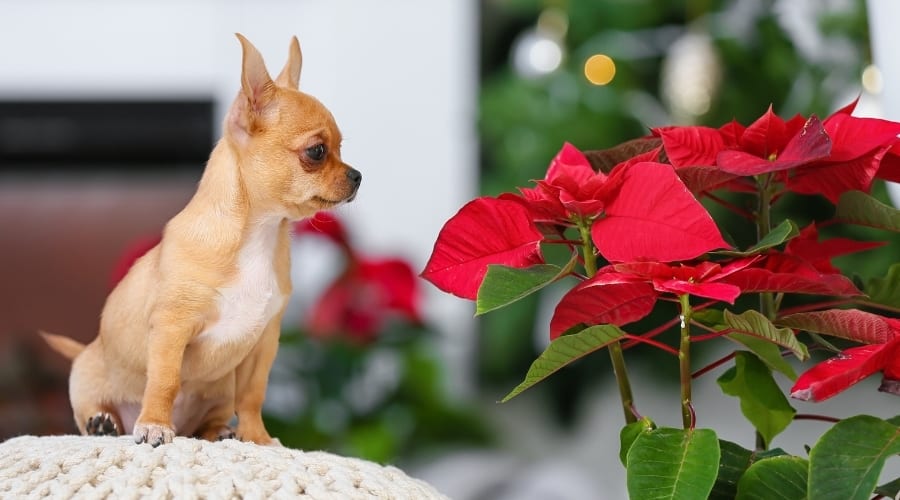
How To Keep Plants (Even Mildly Toxic Ones) Without Putting Your Dog At Risk
You don’t have to choose between your love of plants and your love for your dog. With a few smart adjustments, it’s possible to create a home or garden that allows greenery and dogs to peacefully coexist—even if you’re keeping a few mildly toxic favorites like Pothos or Peace Lilies.
The key is limiting access, redirecting curiosity, and placing plants where your dog can’t get into trouble.
Living Room
- Use macramé hangers, floating shelves, or wall-mounted brackets to elevate trailing or leafy plants.
- Place tabletop plants in glass terrariums, wire covers, or decorative cages to block access.
- Consider tall bookcases where plants can live well above a dog’s reach.
Kitchen & Bathroom
- Keep herbs, succulents, and cut flowers well above counter height, especially when dogs are left unsupervised.
- Be mindful of dropped trimmings or petals, particularly from gift bouquets or floral arrangements.
Balcony Or Patio
- Use raised planters and container gardens to keep plants off the ground.
- Install baby gates, privacy panels, or low decorative fencing around sensitive areas.
Backyard & Garden
- Opt for elevated garden beds to discourage digging, especially in spring when bulbs are freshly planted.
- Use scent-based deterrents like citrus peels, vinegar sprays, or motion-activated repellents to keep dogs away from specific zones.
- Consider temporary fencing or training flags to designate off-limits areas for determined diggers.
Additional Safety Strategies (Especially For Mildly Toxic Plants)
- Use sticky pet tape, aluminum foil, or textured mats around pots to make chewing less appealing.
- Wrap plant bases with mesh or hardware cloth to prevent digging in potted soil.
- Place certain plants inside closed glass display cases if they’re decorative but not worth the risk.
- If your dog shows sudden new interest in a specific plant, relocate it immediately—even if it’s never been a problem.
When Not to Risk It
Mildly toxic plants can often be managed with precautions, but highly toxic species should never be kept in dog-accessible spaces. The risk is too high, even with training and barriers.
Note: Curious puppies, anxious dogs, and newly adopted pets are likelier to nibble, dig, or paw. If that sounds like your dog, stick to truly pet-safe plants until habits are better established.
Why Dogs Eat Plants (And How To Stop It)
Dogs aren’t out to ruin your plant collection—they’re usually just acting on instinct. Understanding the reasons behind plant-chewing behavior can help you curb it more effectively.
Common Reasons Dogs Chew On Plants
- Boredom or excess energy
- Nutritional deficiencies, particularly fiber
- Anxiety or stress relief
- Curiosity or exploratory play
- Learned behavior or attention-seeking
How To Redirect The Behavior
- Offer safe chew toys or interactive feeders to satisfy chewing urges.
- Add dog-safe fiber to meals (like steamed carrots, green beans, or canned pumpkin).
- Use bitter apple spray or citrus-based deterrents on targeted plants.
- Teach and reinforce the “leave it” command around plants.
- Make sure your dog is getting adequate physical exercise and mental stimulation.
Tip: Tired dogs chew less. Daily walks, play sessions, and interactive toys can reduce unwanted chewing dramatically.
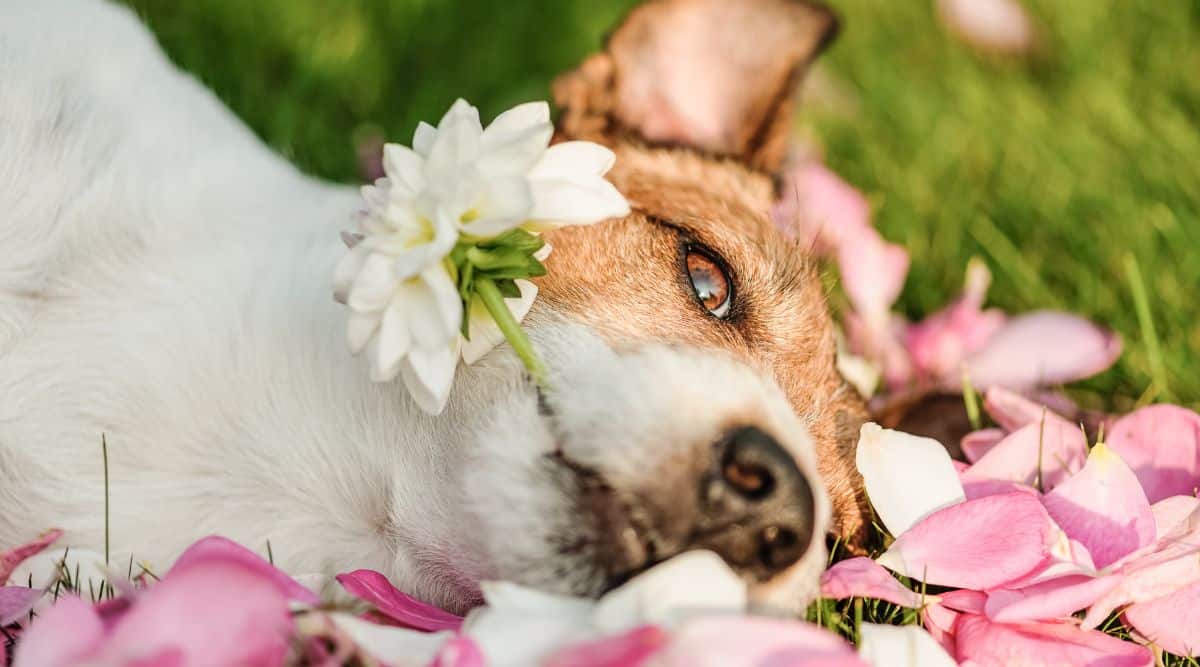
Emergency Action Steps: What To Do If Your Dog Eats A Toxic Plant
Even the most careful dog parents can’t prevent every accident. If you suspect your dog has ingested a toxic plant, acting quickly—and correctly—can make all the difference.
Here’s what to do:
Step 1: Remove Your Dog From The Area
Safely separate your dog from the plant to prevent further exposure. Try to stay calm—your dog will pick up on your stress.
Step 2: Identify The Plant
Take a clear photo of the plant or collect a small sample in a sealed plastic bag. Note whether your dog ate a leaf, stem, flower, bulb, or root—and how much.
Step 3: Call Your Vet Or A Pet Poison Hotline
Don’t guess. Call your veterinarian, an emergency animal clinic, the ASPCA Animal Poison Control Hotline at 888-426-4435, or the Pet Poison Helpline at 855-764-7661.
Step 4: Get To The Vet (If Advised)
Bring your dog, the plant sample or photo, and any relevant information:
- Approximate time of ingestion
- Symptoms observed
Prompt treatment—even within the first hour—can prevent serious complications or long-term damage.
Important Reminder: Even if your dog seems fine, symptoms can be delayed by several hours. Never wait for signs to appear before seeking help with highly toxic plants. Learn more about treating a poisoned dog.
30-Second Plant Safety Checklist For Dog Owners
Take a quick walk through your home and garden. Can you confidently say yes to each of these?
- All highly toxic plants have been removed
- Spring bulbs like tulips and daffodils are planted in fenced or inaccessible areas
- Mildly toxic plants are placed on high shelves, in hanging planters, or behind barriers
- Fertilizers (especially blood meal, bone meal, and rose food) are stored securely out of reach
- All new plant purchases are cross-checked against the ASPCA Toxic & Non-Toxic Plant List
Visual Guide: Infographic On Poisonous Plants For Pets
We created this handy guide of safe and toxic plants you can reference. It also includes poison symptoms and what to do if your dog eats a plant that could be unsafe.

Tech Tools That Help Keep Dogs Safe From Plants
Want to ID a mystery plant or respond quickly to an emergency? These apps put pet safety in your pocket.
Plant Identification Apps
- PictureThis or PlantSnap – Instantly identify houseplants, garden flowers, and weeds by snapping a photo.
- Seek by iNaturalist – Great for walks or hikes when you’re unsure about wild plants.
Emergency Help Apps
- Pet First Aid by American Red Cross – Step-by-step guidance for handling plant poisoning, choking, or other emergencies.
Tip: Create a folder in your phone with your vet’s number, both hotlines and a link to the ASPCA plant database for quick access in case of emergencies.
Protecting Your Pup: How Pet Insurance Can Help Cover Emergencies
Plant poisoning isn’t just heartbreaking—it can be financially devastating. Emergency vet bills often range from $800 to $3,000, and treatment for organ failure or seizures can push that even higher.
Here’s where pet insurance steps in. The right plan can reimburse up to 90% of eligible vet expenses. This can include:
- Emergency room visits
- Lab work and diagnostics
- IV fluids and medications
- Overnight hospitalization
- Post-emergency follow-ups
You can learn more about pet insurance and decide if it could help you manage your pet-related expenses.
Why Trust Canine Journal?
Canine Journal’s team considers the health and safety of our pets in every decision we make. This guide was crafted using data from leading veterinary sources, including the ASPCA, American Kennel Club, Pet Poison Helpline, and peer-reviewed studies in veterinary toxicology.
Tara contributed her firsthand knowledge as a plant enthusiast and pet parent. With a home full of indoor and outdoor greenery and three inquisitive pets, she understands the balancing act between keeping a vibrant plant collection and maintaining a safe environment for dogs. Her insights helped shape this guide into a resource that’s medically accurate and practical for real-world pet homes.
We created this article to empower you with clear, trustworthy guidance—so you can enjoy a dog-safe home without giving up your love for plants.

